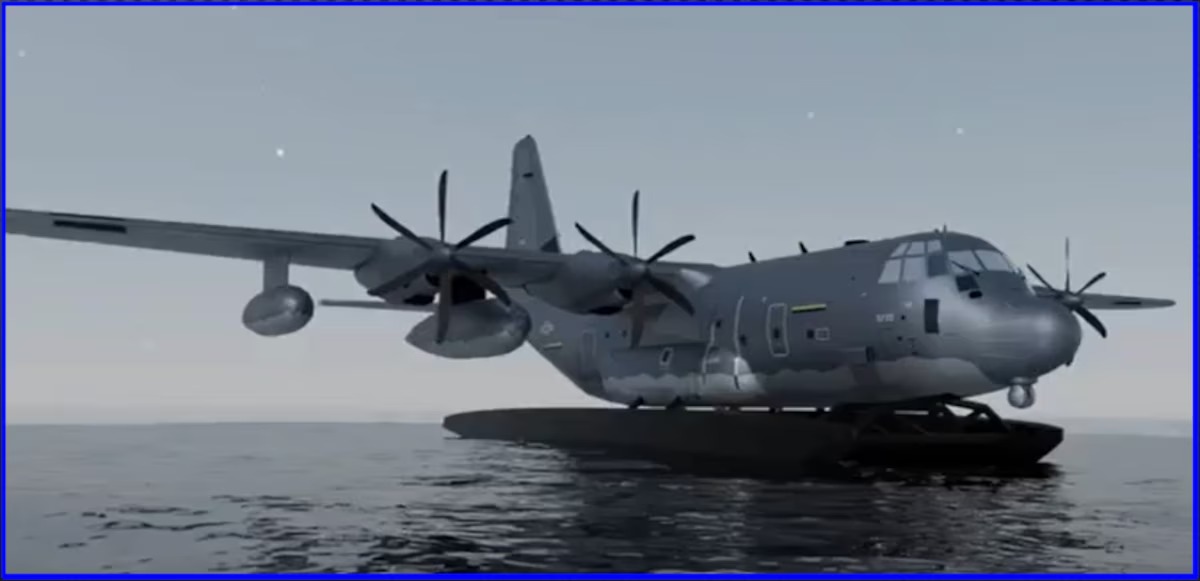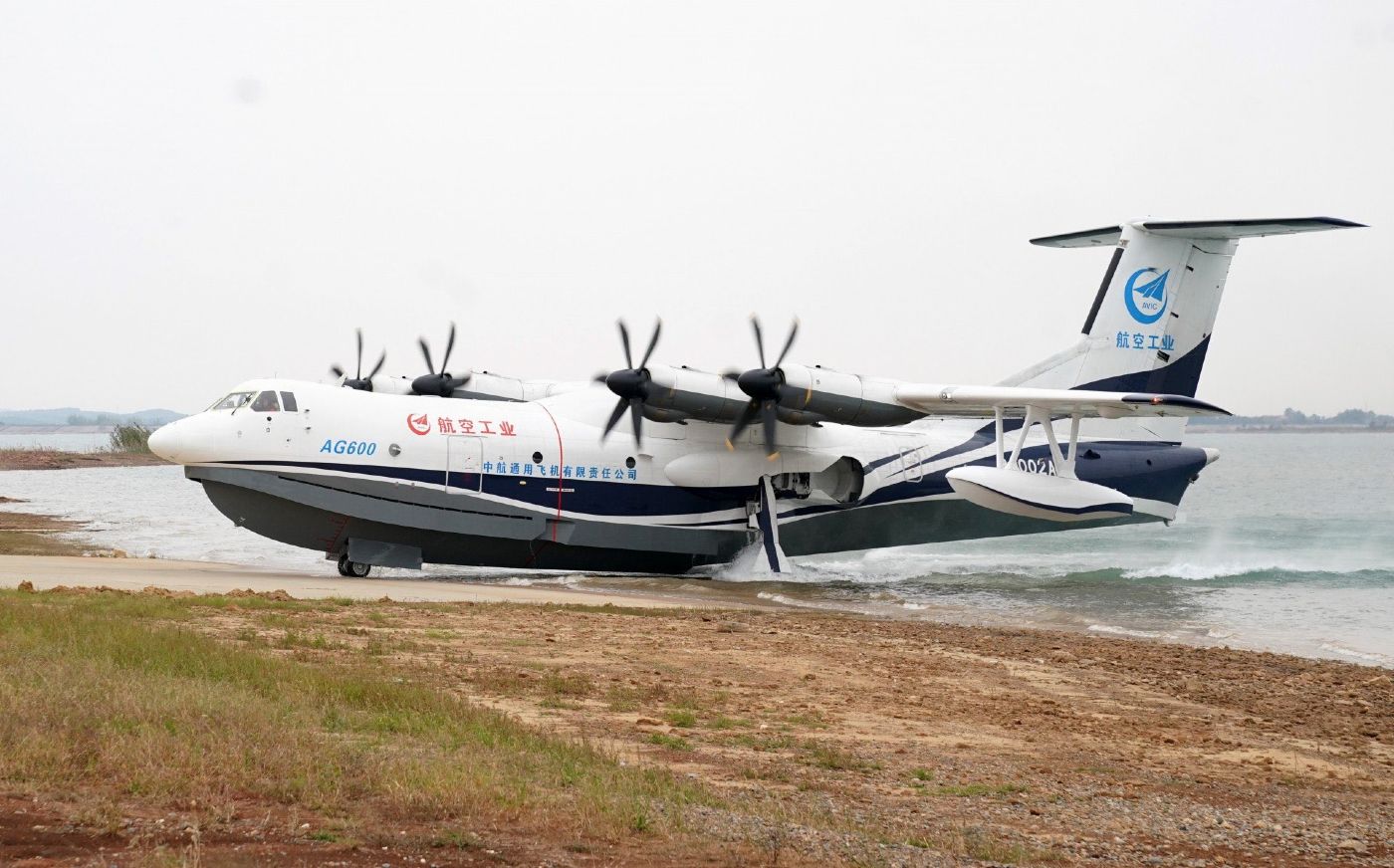Despite a defense budget that amounts to nearly a trillion dollars, the United States may be shelving the ambitious program of converting an MC-130J Commando II special operations tanker/transport aircraft into a floatplane.
The U.S. Special Operations Command (SOCOM) has attributed the proposed move to financial constraints. Simultaneously, SOCOM is aggressively investigating other means of augmenting air mobility, particularly due to the lurking Chinese threat in the Indo-Pacific.
The MC-130J Amphibious Capability (MAC) project reportedly received an update on May 7 during the annual SOF Week conference from Air Force Col. T. Justin Bronder, SOCOM’s program executive officer for fixed-wing aviation programs.
“Looking at kind of the budget projections, and some of the actual cost-effectiveness [considerations] of that particular kind of integration effort, [we] decided it was best to kind of take all that work and transition it for…future use,” Bronder said. “And [we] kind of reach[ed] that first milestone of understanding what it would take to field MAC.”
This is significant as President Joe Biden’s overall U.S. defense and national security budget request released in March stood at a whopping $895 billion.
While it is merely a 1% increase from the previous year, it is fast approaching the one-trillion mark. Intriguingly, the Pentagon has decided to abandon several ambitious programs, including the floatplane.
Notably, the budget request includes $11.5 million for SOCOM to cover the cost of fabricating the first parts required for the MC-130J floatplane conversion. The Pentagon had also requested $15 million for the MAC project in its proposed Fiscal Year 2024 budget. As per official budget documents, the year-over-year “decrease of $3.5 million…is due to [the] completion of detailed design activities in F.Y. 2024.”
The Air Force officially announced the MAC initiative in 2021, and subsequently, graphic renditions were released showing the MC-130J amphibious capability (MAC) aircraft resting on two enormous pontoons with its landing gear protruding on the bottom for takeoff and land taxiing. However, there have been several delays in the scheduled flight testing of the modified Commando II aircraft.

China, on its part, has its floatplane called the AG-600 Sea Dragon. It has reportedly built four prototype AG600M aircraft, and they have been conducting relevant flight testing at various locations. While projected as a benign aircraft designed for rescue operations in the civilian domain, the aircraft is believed to have diverse military utility.
Some observers based in the West have expressed concern that the aircraft would be ideal for supporting China’s military operations, especially in the South China Sea, where the country has constructed an array of artificial islands.
Huang Lingcai, the AG600’s chief designer at Chinese state-owned Aviation Industry Corporation of China (AVIC), was previously reported saying that AG600 aircraft could make round trips from the southern island province of Hainan to James Shoal in the South China Sea without refueling.
Floatplanes were used by the U.S. Navy as far back as the First World War. Records point out that the U.S. Navy flew floatplanes from cruisers and battleships, as well as from a few destroyers and a submarine.
The U.S. military withdrew its last seaplane before the Cold War ended. Still, its increased attention to the Pacific and a potential clash with China has sparked a resurgence in interest in amphibious aircraft.

The Case For A Float Plane For The U.S.
Amid concerns of a potential conflict with China, the SOCOM has been searching for methods to transport personnel and supplies to remote areas within or near potentially disputed areas.
There are many benefits of taking off and landing on the water. U.S. officials and analysts previously noted the MC-130 was a desirable platform for such capabilities since it could operate on short, frequently rough airstrips.
While the MAC is being shelved, several military pundits continue to make a case for floatplanes/seaplanes for future maritime combat. The crusaders of the program often cite the role played by similar aircraft during the Second World War.
Seaplanes performed many tasks during World War II, including supporting rebel and spy networks, resupplying remote operating areas, saving downed airmen and sailors, and serving as the field commanders’ eyes and ears.
They occasionally performed vital combat duties in the absence of land-based aircraft. These seaplanes played crucial roles in the Battle of the Atlantic and the Southern and Central Pacific battles before safe air bases became available.
It is believed that the seaplane could be a critical asset against China, which has a very sophisticated A2/AD (Anti Access/Area Denial) system along its shores.

In March, a former U.S. Navy SEAL officer wrote for USNI: In the Pacific theater, U.S. power projection is dangerously dependent on a handful of tactically vulnerable island redoubts: Guam, Saipan, Okinawa, Kwajalein, and Oahu. All could be easily targeted, and their infrastructure could be destroyed in the opening phases of a war, just as in 1941. However, in a potential future war, hypersonic missiles and precision-guided munitions would make the destruction of those bases more efficient and total.”
“U.S. adversaries are far better prepared for the unique tactical and logistical requirements of a western Pacific confrontation,” he added.
Here is the visual of JMSDF 9903, If you ever wondered about the Main Landing Gear retraction of a ShinMaywa US-2 flying boat , that's being seen as an alternative to the MC-130J Seaplane project.
Video : ⌘⁂暁⁂⌘#aircraft #aviation pic.twitter.com/PnOmAmluJO
— FL360aero (@fl360aero) May 18, 2023
For this reason, the United States has been exploring its options for seaplanes or amphibious aircraft. However, there have been other instances where project-related plans have been shelved, allegedly because of financial limitations.
Military analysts have also suggested that the U.S. could buy the Japanese US-2 amphibious plane that has already proved its mettle.
Some have gone so far as to say that buying just a small number of these aircraft from its most trusted ally would help the U.S. military assess whether it meets the combat need while also acting as a stop-gap solution while conducting research and developing its future seaplanes.
Additionally, it would allow the two allies a greater deal of interoperability in a combat scenario. However, the Pentagon has not decided this yet.
That being said, while the range, cargo capacity, and ease of converting the MJ-130 have made this a very durable option as opposed to developing a new platform from scratch, the plug has been pulled, likely in favor of something better.
- Contact the author at sakshi.tiwari9555 (at) gmail.com
- Follow EurAsian Times on Google News




